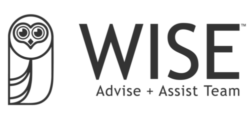Why Successful Businesses Use Email Automation
Written by: Kilory Rivera, WISE Digital Marketing Strategist
Email automation allows you to set up a series of emails that will automatically deliver to specific customers as soon as they meet a trigger. This trigger could be a specific date, event or action such as a website page visit, event registration or an abandoned shopping cart.
Why use automation?
Email automation helps nurture your customers by keeping them engaged with personalized, relevant and timely emails. You will only need to set up an automation once, knowing it will continue to deliver the right content at the right time whenever a new trigger is met, resulting in more website visits and revenue for your business.
How do I get started?
- Define a specific goal. Yes, we all want more website visits and sales, but in order to have successful email automation, you will need to be more specific. Specific goals can include:
- Welcoming new customers and sending a timed email sequence when they enter a program. Some examples include online courses or webinars, fitness programs, and event registrations.
- Getting customers to complete an online store checkout by sending an abandoned cart reminder email to visitors who added items to their cart but left the site without purchasing.
- Upsell products or services by sending an email with related products to a customer who made a purchase on your site.
- Remind inactive customers that you’re here to help with any questions or concerns. You could also bring customers back to an active status by offering an incentive.
- Research email marketing service providers and their campaign automation features. Some platforms are more robust than others, so you want to find what works for your business. WISE has done numerous successful automations with providers like ActiveCampaign, Mailchimp, and Convertkit.
- Create a plan or blueprint. Plan out a sequence of emails that make sense and drive individuals closer to your goal.
- Define the trigger. Did the customer make a purchase on your site, join a program or register for an event?
- Draw or map out how many different emails it will take to nurture your clients into reaching your goal. Then decide how often they will be delivered. A welcome email tends to be sent out immediately but a follow-up email could be sent 1, 3 or even 7 days after the initial trigger.
- Write the copy and make sure to include calls to action.
- Enable or turn on your automation to get started. I like to tag users who complete a goal to differentiate them from those who didn’t. Maybe we can add those inactive users to a new goal; Nurture inactive customers.
- Test, Adjust and continue to create automated campaigns as needed.
By including automation in your marketing strategy, you will keep your customers engaged without having to do the work over and over again. And the best part is you’ll have extra time to focus on other aspects of your business while the automation drives more traffic, increases revenue and strengthens customer relationships.
2019 is set out to be the year of customer experience email marketing, so make sure you stay ahead of the curve by providing the best customer journey.
Need to set up email automation for your business? Our team of experts can help, set up a Discovery Call today! https://wiseadviseteam.com/contact/

Kilory Rivera
Kilory has over 10 years of experience. With an Internet Marketing Master’s Degree from Full Sail University, her specialities include: Strategy and Implementation, Search Engine Optimization, Multi-Platform Integrations, Customer Journeys and Automations, Email Marketing, and Search Campaigns.
Kilory has successfully managed projects in several different markets including the Latin American region, the Caribbean, & the US. A proud Air Force wife and mother, she loves to travel, cook, and entertain family and friends.
